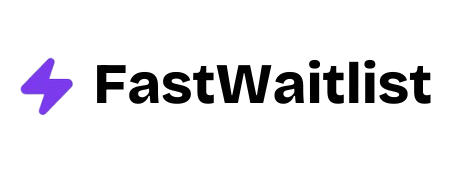
Did you know that using the right landing page builder can boost your conversion rates by up to 30%? If you're looking to create high-converting landing pages, you've likely come across two popular options: Unbounce and Instapage. This article will compare these tools to help you pick the best one for your business needs.
Understanding Unbounce and Instapage
Unbounce: The Smart Builder
Unbounce has made a name for itself as a user-friendly landing page builder. It offers a drag-and-drop interface that makes creating landing pages a breeze, even for those without design experience. With over 100 templates to choose from, Unbounce gives users a solid starting point for their landing page designs.
One of Unbounce's standout features is its suite of smart tools. These AI-powered features set it apart from many competitors. For example, the Smart Builder uses AI to suggest design elements based on your industry and goals. This can save time and help create more effective pages.
Unbounce also offers Smart Copy, which uses AI to generate text for your landing pages. This can be a huge time-saver, especially if you're not confident in your copywriting skills. The Smart Traffic feature is another AI-powered tool that automatically directs visitors to the landing page variant most likely to convert them.
Instapage: Precision and Collaboration
Instapage takes a different approach, focusing on precision design and team collaboration. While it offers fewer templates than Unbounce (about 90 full landing page templates), Instapage makes up for this with its advanced design capabilities.
The Instapage builder allows for pixel-perfect design, meaning you can place elements exactly where you want them on the page. This level of control can be crucial for brands with strict design guidelines.
Instapage also shines when it comes to team collaboration. Its real-time collaboration features allow multiple team members to work on a landing page simultaneously, leaving comments and making edits in real-time. This can streamline the design process, especially for larger teams or agencies working with clients.
Another standout feature of Instapage is its heatmaps tool. This allows you to see exactly how visitors are interacting with your landing page, showing where they click, how far they scroll, and which elements they engage with most.
Key Differences Between Unbounce and Instapage
1. Page Builder Interface
The page builder is the heart of any landing page tool, and this is where Unbounce and Instapage take different paths.
Unbounce's interface is often described as more intuitive. It uses a simple drag-and-drop system that many users find easy to grasp quickly. You can add elements to your page by simply dragging them from the sidebar and dropping them where you want. This simplicity makes Unbounce a good choice for beginners or those who want to create pages quickly.
However, this simplicity comes at a cost. Unbounce's editor isn't as precise as Instapage's. While you can place elements freely on the page, fine-tuning their exact position can be more challenging.
Instapage, on the other hand, offers more precision in its editor. It uses a grid system that allows for pixel-perfect placement of elements. This means you can align elements exactly how you want them, which can be crucial for maintaining brand consistency or creating complex layouts.
Instapage also offers advanced features like element grouping and resizing. You can group multiple elements together and resize them as a unit, maintaining their relative positions. This can be a huge time-saver when creating complex designs.
2. Unique Features
Both Unbounce and Instapage offer unique features that set them apart from each other and from other landing page builders.
Unbounce's standout features are its AI-powered tools. The Smart Builder uses AI to help you create effective landing pages based on your industry and goals. Smart Copy can generate AI-written copy for your pages, which can be a huge time-saver. Smart Traffic automatically directs visitors to the landing page variant most likely to convert them, based on their characteristics.
Instapage's unique features focus more on design and analytics. Its Instablocks feature allows you to save sections of your landing pages as reusable blocks, which can speed up the design process for future pages. The heatmaps feature provides valuable insights into how visitors interact with your pages. Instapage also offers a Mobile Aspect Ratio Lock, which ensures that grouped elements maintain their layout when viewed on mobile devices.

3. Templates and Design
Templates can be a great starting point for your landing pages, saving you time and providing design inspiration.
Unbounce offers over 100 templates, covering a wide range of industries and use cases. These templates are fully customizable, so you can use them as a starting point and then adjust them to fit your brand. Unbounce also allows you to purchase additional templates from ThemeForest, giving you even more options.
Instapage offers fewer templates, with about 90 full landing page templates. However, these templates are known for their high quality and modern design. Like Unbounce, Instapage's templates are fully customizable.
Both platforms allow you to start from a blank canvas if you prefer to design your pages from scratch.
4. Building Pages at Scale
For businesses that need to create many landing pages, features that support building at scale are crucial.
Unbounce offers several features that help with scaling. Its Smart Builder can quickly generate landing pages based on your inputs, which can be a time-saver when creating multiple pages. You can also duplicate existing pages and make minor tweaks, which can be useful for creating variations for A/B testing.
Unbounce also offers features for managing multiple clients or campaigns. You can set up sub-accounts, manage user permissions, and organize campaigns into groups. This can be particularly useful for agencies managing multiple clients.
Instapage's approach to scaling focuses on its Instablocks feature. With Instablocks, you can save sections of your landing pages (like headers, testimonial sections, or call-to-action blocks) and reuse them across multiple pages. This can significantly speed up the process of creating new pages, especially if you're creating pages with similar structures.
Instapage also offers strong team collaboration features. Multiple team members can work on a page simultaneously, leaving comments and making edits in real-time. This can streamline the design process, especially for larger teams or when working with clients.
Integrations: Connecting Your Marketing Stack
In today's interconnected digital marketing landscape, the ability of your landing page builder to integrate with other tools is crucial.
Unbounce Integrations
Unbounce offers over 100 native integrations with popular marketing and analytics tools. These include email marketing platforms like Mailchimp and Campaign Monitor, CRM systems like Salesforce and HubSpot, and analytics tools like Google Analytics.
One of Unbounce's strengths is its integration with Zapier, which allows you to connect Unbounce with thousands of other apps and automate workflows. This can be particularly useful if you need to integrate with a niche tool that doesn't have a native integration.
Instapage Integrations
Instapage boasts over 120 native integrations, slightly edging out Unbounce in this area. Like Unbounce, it integrates with major marketing and analytics platforms. However, Instapage also offers some unique integrations that Unbounce doesn't, such as direct integration with Facebook Ads and AdRoll.
Instapage also integrates with Zapier, expanding its connection possibilities even further. Additionally, Instapage offers a webhook integration, allowing for custom integrations with virtually any tool that supports webhooks.
Pricing: Bang for Your Buck
Pricing is often a key factor in choosing a landing page builder. Both Unbounce and Instapage offer tiered pricing plans, but their structures and price points differ significantly.
Unbounce Pricing
Unbounce offers four main pricing tiers:
- Launch: $81/month (billed annually)
- Optimize: $122/month (billed annually)
- Accelerate: $203/month (billed annually)
- Concierge: $518/month (billed annually)
The Launch plan is suitable for small businesses or those just starting with landing pages. It includes up to 500 conversions and 20,000 visitors per month. The Optimize plan adds A/B testing and more advanced features, while Accelerate and Concierge plans are geared towards larger businesses with higher traffic needs.
Instapage Pricing
Instapage has a simpler pricing structure with two main plans:
- Building: $149/month (billed annually)
- Converting: Custom pricing
The Building plan includes unlimited conversions and visitors, making it more straightforward than Unbounce's tiered approach. However, it's also more expensive than Unbounce's entry-level plan. The Converting plan is a custom solution for enterprise clients with advanced needs.
Both platforms offer a 14-day free trial, allowing you to test their features before committing to a paid plan.
Pros and Cons: Weighing Your Options
To help you make a decision, let's break down the main pros and cons of each platform.
Unbounce Pros and Cons
Pros:
- User-friendly interface, great for beginners
- AI-powered features like Smart Builder and Smart Copy
- More affordable entry-level plan
- Wide range of templates
Cons:
- Less precise editing capabilities
- Steeper learning curve for advanced features
- Conversion limits on lower-tier plans
Instapage Pros and Cons
Pros:
- Precise, pixel-perfect editing
- Strong team collaboration features
- Unlimited conversions on all plans
- Advanced features like heatmaps and Instablocks
Cons:
- More expensive entry-level plan
- Fewer templates than Unbounce
- Steeper learning curve for beginners

Use Cases: When to Choose Each Platform
The best choice between Unbounce and Instapage depends on your specific needs and circumstances.
When to Choose Unbounce
Unbounce is often a better choice for:
- Small to medium-sized businesses on a tighter budget
- Marketers who want to leverage AI for optimization
- Those who prefer a more intuitive, user-friendly interface
- Businesses that need a wide variety of templates to choose from
Unbounce's AI-powered features can be particularly useful if you're not confident in your design or copywriting skills, or if you want to optimize your pages quickly.
When to Choose Instapage
Instapage might be the better option for:
- Larger teams that need strong collaboration features
- Designers who require pixel-perfect control over layouts
- Businesses with high traffic volumes (due to unlimited conversions)
- Marketers who want advanced analytics like heatmaps
Instapage's precision editing and team collaboration features make it a strong choice for agencies or in-house teams that need to create highly customized landing pages.
Frequently Asked Questions
How do Unbounce and Instapage compare in terms of ease of use?
Unbounce is often considered more user-friendly, especially for beginners. Its drag-and-drop interface is intuitive and easy to grasp quickly. Instapage, while still user-friendly, has a steeper learning curve due to its more advanced features and precise editing capabilities.
Can I use my own domain with these platforms?
Yes, both Unbounce and Instapage allow you to use your own domain for your landing pages. This is important for maintaining brand consistency and trust with your visitors.
Do Unbounce and Instapage offer A/B testing?
Both platforms offer A/B testing capabilities. However, with Unbounce, A/B testing is only available on the Optimize plan and above. Instapage includes A/B testing in all its plans.
How do the mobile responsiveness features compare?
Both Unbounce and Instapage offer mobile-responsive designs. Unbounce allows you to create separate mobile versions of your pages, while Instapage uses a Mobile Aspect Ratio Lock to ensure your designs look good on all devices.
Can I integrate these tools with my existing marketing stack?
Yes, both Unbounce and Instapage offer numerous integrations with popular marketing and analytics tools. They also both integrate with Zapier, allowing you to connect with thousands of other apps.
Conclusion: Making Your Choice
Choosing between Unbounce and Instapage isn't a simple decision. Both platforms offer powerful features for creating high-converting landing pages, but they excel in different areas.
Unbounce stands out with its AI-powered features and user-friendly interface, making it a great choice for small to medium businesses or those new to landing page creation. Its more affordable entry-level plan also makes it accessible to businesses with tighter budgets.
Instapage, on the other hand, shines with its precise editing capabilities, team collaboration features, and advanced analytics. It's often the preferred choice for larger teams, agencies, or businesses that need pixel-perfect control over their landing page designs.
Ultimately, the best choice depends on your specific needs, budget, and team structure. Both platforms offer free trials, so it's worth taking them for a test drive to see which one feels right for you. Remember, the goal is to create landing pages that convert, so choose the tool that best helps you achieve that goal.
